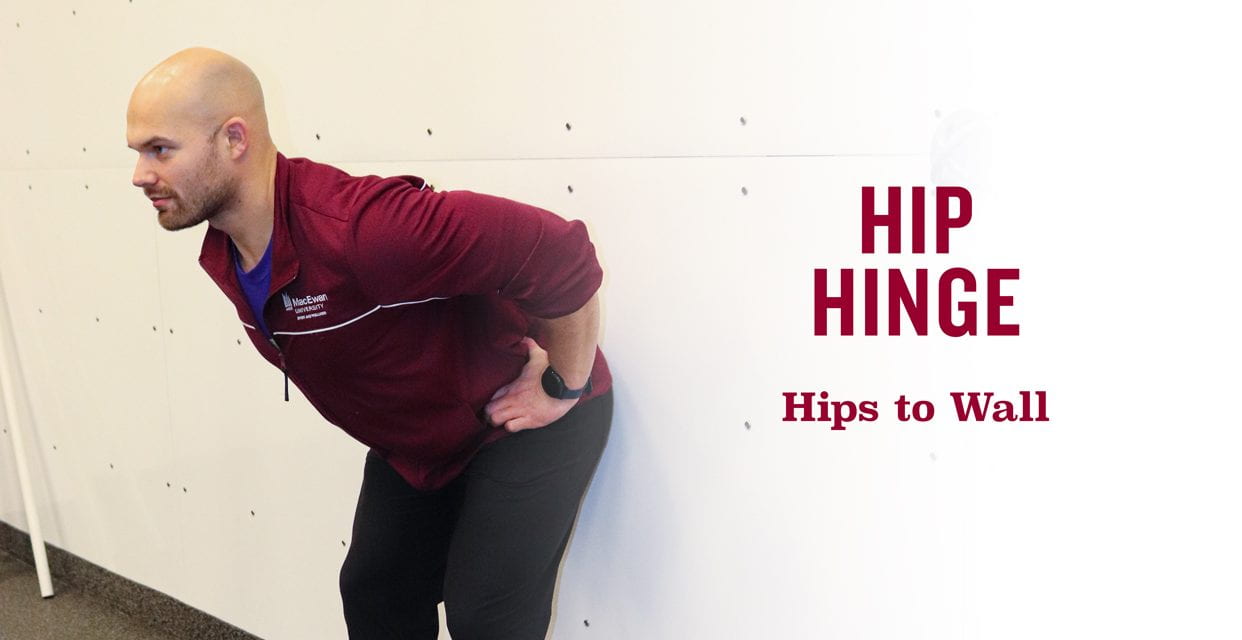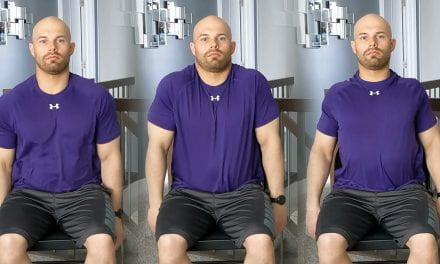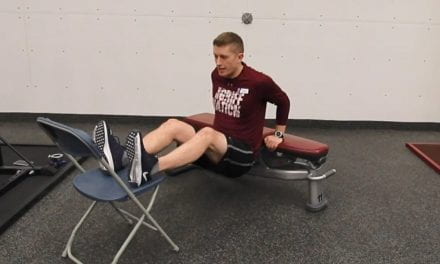Hips to Wall
One of the key movement patterns individuals should master early in their fitness journey’s is the hip hinge. The hip hinge is the basic movement pattern behind the conventional deadlift, and often incorporated into many row movements. When an individual becomes proficient at the hip hinge movement, they can understand how to keep tension in their torso while generating force through their hips allowing them to lift weights in a safe and effective manner.
Objective
- The primary goal of the Hips to Wall drill is to encourage movement of the hips while keeping an engaged core with a neutral spine. It also acts as an assessment tool to see if you have excessive tightness in the hamstrings, hips or other areas.
Joints Targeted
- The primary joint of movement will be through the hips, there is also a requirement of the intervertebral joints (the joints of the spinal column) to create stability during the movement.
Muscle Groups Targeted
-
Agonists
-
- Semimembranosus
- Semitendinosus
- Biceps Femoris
- Gluteal muscles
-
Stabilizing muscles
-
- Erector spinae
- Rectus abdominus
- Internal/external obliques
- Gluteus minimus/minimus
- Gastrocnemius
Starting Position
- Standing up tall with your hands on your hips with proper posture at the shoulders. Your heels should be two to six inches off the wall.
- Unlock your knees.
Movement
- In a controlled manner, maintaining proper posture of your torso and shoulder and your knees unlocked.
- Allow your hips to drift back towards the wall focusing on keeping your torso engaged creating a “wedge with your body”.
- When your butt hits the wall reverse the movement bringing the hips back inline with your heels still with unlocked knees.
Recommended sets and repetitions
- If you are just learning the movement do five to 10 reps making sure you have maintained proper spinal position during each movement.
- As you become more confident in your movements move your feet away from the wall an inch or two then repeat five reps.
- Continue for one to five sets until you can either get your torso Parallel to the ground or you cannot reach the wall with your butt while you maintain proper spinal position.
Visit our website for information on training consultations, virtual coaching, plus individual and group personal training. If you’re ready to work with one of our Exercise Specialists, fill out the consultation form so we can connect you with the best trainer to help you meet your goals. Sign-up to receive our monthly newsletter for news, announcements, program information, swim tips, and exercise demos.
by Kyle Babiuk
Kyle is a Bachelor of Kinesiology Graduate and is certified with the Canadian Society for Exercise Physiologists. He specializes in movement analysis, chronic disease management through exercise and strength programming. He’s worked with athletes, individuals with chronic diseases, along with many other individuals trying to achieve their health and fitness goals.




